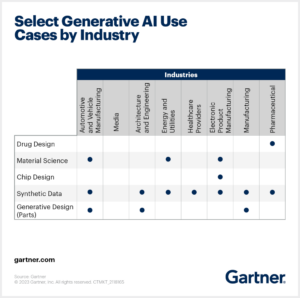
Now & Next Generative AI (The Eras Edition)
A tipping point is that magical moment when a movement crosses an invisible threshold and spreads like wildfire. After a generation of promises related to AI technology, recent advances in generative AI Chat GPT have triggered an AI arms race in which organizations of all sizes and types are now actively grappling with how they might harness the power of this remarkable technology.
Yesterday’s automation curiosity is today’s automation necessity. Companies that embrace automation will do business faster, more accurately, and more efficiently. It gets even better with generative AI. Let’s fill in this ‘blank space’ with the evolution of Generative AI (The Eras Edition)…
Enchanted – The Shiny New Object Gets Even Brighter
The darling of generative AI, OpenAI’s ChatGPT, released version 4 this month. You may wonder how much could change in less than six months since 3.5 was deployed, but the advancements are mind-boggling.
While less capable than humans in many real-world scenarios, GPT-4 exhibits human-level performance on various professional and academic benchmarks. It passes a simulated bar exam with a score around the top 10% of the test taken.
In contrast, GPT-3.5’s score was around the bottom 10%. The latest iteration scores a 4 on the AP Calculus BC exam, up from a 1 in just six months. Beyond academics, it passed all three levels of the notoriously-difficult Court of Master Sommelier exams.
Ready For It? – The ChatGPT Revolution
Undoubtedly, generative AI will transform many jobs and revolutionize the economy. Businesses and individual users will have a chance to choose how they want to exploit the capabilities. Companies can decide to use the technology to give workers more abilities–or to cut jobs and trim costs.
Recent studies in MIT Technology Review report that large language models such as GPT could have some effect on 80% of the US workforce. They further estimated that the AI models, including GPT-4 and other anticipated software tools, would heavily affect 19% of jobs, with at least 50% of the tasks in those jobs “exposed.” In contrast to what we saw in earlier waves of automation, higher-income jobs would be most affected. Some of the people whose jobs are most vulnerable: are writers, web and digital designers, quantitative financial analysts, and—just in case you were thinking of a career change—blockchain engineers.
Mastermind – Three Executive Pillars
With generative AI disrupting nearly every industry in the coming years, leadership needs to look beyond the technology and ensure the organization is prepared to exploit the opportunity and manage the challenge. With proper planning, current business models can become more relevant.
BCG’s Guide to the Generative AI Revolution identified three key pillars to help guide the strategic choices required to drive competitive advantage.
Potential — Identify the use cases that will differentiate your organization.
People — Adapt your organizational structures and prepare your employees to support deployment.
Policies — Set up ethical guardrails and legal protections
The C-suite needs to avoid the allure of the technology and focus on the strategic implications on the industry.
You Belong With Me – Driving Automation Forward
This would be unwise. As the industry fawns over generative AI solutions that fashion whole texts, images, and code, it’s easy to forget about or even neglect critical tools such as robotic process automation (RPA) software, reports Forbes.
Combining generative AI with these silent but efficient task rabbits offers the most promise of transforming business.
As generative AI solutions mature, enterprises will begin to deploy them. They can potentially revolutionize how organizations automate business processes in ways that tools that preceded them have not.
The tools provide a powerful one-two punch: As generative AI automates and transforms content generation across business lines, RPA bots will continue streamlining and accelerating repetitive operations. Together, they will free humans to focus on more meaningful work with customers, partners, and suppliers.
Look What You Made Me Do – Next Gen Generative AI Use Case
ChatGPT’s ability to augment creative work is beginning. Enterprise uses for generative AI are far more sophisticated. Gartner reports that it can explore many possible designs of an object to find the right or most suitable match. The technology augments and accelerates design in many fields and has the potential to “invent” novel designs or objects that humans may have missed otherwise.

Getaway Car — Start Now, Think Big, Go Fast
Companies that don’t invest in generative AI and automation will eventually lose their competitive advantage. We are never going back – like, ever. Yesterday’s automation curiosity is today’s automation necessity. Companies that embrace automation will do business faster, more accurately, and more efficiently.
If you want to learn more about how generative AI and automation help you win in the market and deliver operational excellence to the enterprise, let’s chat.
